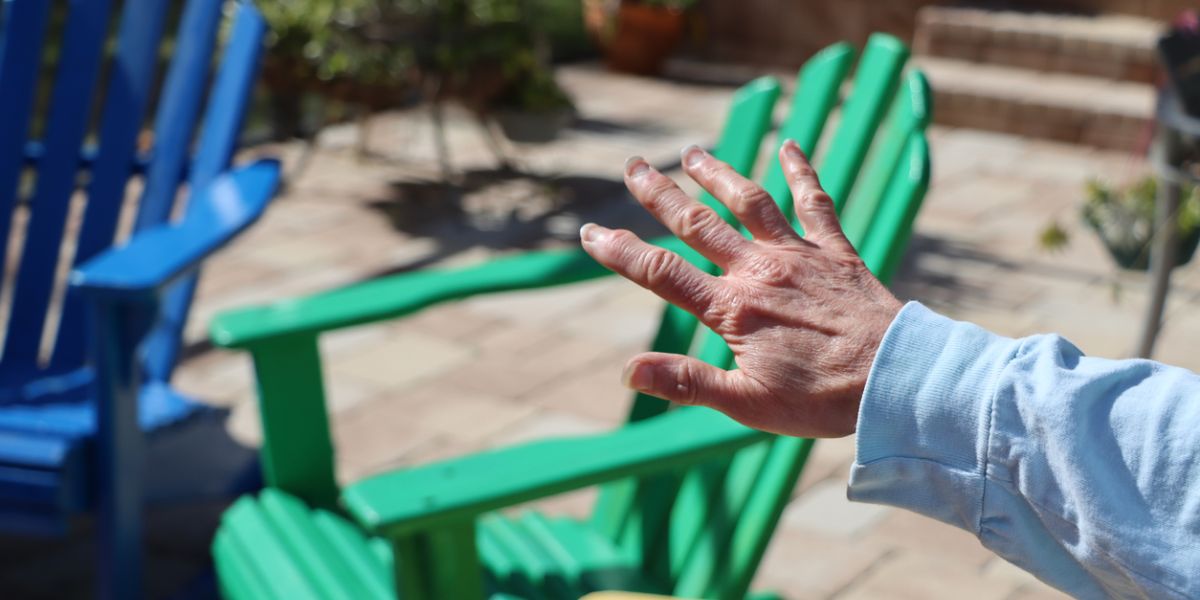Most people will develop the occasional joint pain and aches sometime in life. Unfortunately, a significant number of these individuals will develop chronic joint pain and stiffness that signals the development of arthritis. At present, nearly 55 million American adults have some type of chronic joint and pain problems, and the numbers are rapidly increasing each year. What does arthritis feel like? It’s painful.
There are several types of arthritic disorders, but the two major ones are osteoarthritis (OA) and rheumatoid arthritis (RA). In general, rheumatoid arthritis is classified as inflammatory arthritis, whereas osteoarthritis is a disorder due to the normal wear and tear of the joint tissues. Both types of arthritis can present with joint-related symptoms. Osteoarthritis tends to affect the larger joints of the body, like the hips, knees, shoulders, and elbows, whereas rheumatoid arthritis tends to affect the smaller joints, like the wrist, fingers, and toes. Rheumatoid arthritis also tends to be symmetrical and presents at an earlier age.
THE AGE OF ONSET FOR RHEUMATOID ARTHRITIS AND OSTEOARTHRITIS
RA usually starts to develop between the ages of 30 and 50, but it can also occur in young children and teenagers. When RA occurs in young people, it is often called young-onset rheumatoid arthritis. In individuals who develop symptoms after the age of 50, it is called late-onset rheumatoid arthritis.
OA, on the other hand, is usually a disease of older age. It rarely occurs in young people. Most people show signs of OA after age 45 and, like RA, it is a progressive disease. With advancing age, OA can lead to loss of ambulation, joint pain, and loss of joint function.
THE SYMPTOMS OF OSTEOARTHRITIS
What does arthritis feel like? The key symptom of osteoarthritis is joint pain. Initially, the pain may be mild and not very noticeable. However, as the disease progresses and the cartilage wears away, the joint pain can worsen. The pain of osteoarthritis is best described as follows:
- Pain that worsens with physical activity and gets better with rest.
- The pain is deep down in the joint.
- The pain may vary from an odd ache to a constant gnawing pain.
- The pain is usually not felt first thing in the morning, but it will come on with any type of activity during the day.
- The pain can be severe and may affect your ability to walk. Limping is not an uncommon feature of osteoarthritic pain.
- The pain can be severe and may affect your posture.
- Anytime you use the joint, the pain will come on.
- The pain from the hip joint may radiate into the buttocks, groin, or thigh areas.
- After physical activity, the joint may appear swollen.
- First thing in the morning, your joint may feel stiff and be difficult to move. This joint stiffness usually improves as the day progresses.
- You may feel a sensation of bones rubbing against each other in the joint.
- Certain activities, such as using stairs, may quickly provoke pain in the joint.
- The pain may be constant and so severe that you will not be able to do any household chores or even exercise.
THE SYMPTOMS OF RHEUMATOID ARTHRITIS
The one key difference between osteoarthritis and rheumatoid arthritis is that the latter is a systemic disease that affects many organs. Besides the joint pain and discomfort, the individual with rheumatoid arthritis can present with many other symptoms. Rheumatoid arthritis ICD 10 (International Classification of Diseases, 10th edition) has a diagnosis code of M06.9 for unspecified areas of the body. It is notated as a chronic systemic disease, with joints as its primary targets.
The joint involvement in RA is usually symmetrical and involves the smaller joints, especially those of the wrists, hands, and toes. As the disease progresses, other joints of the body may also be involved, like the neck, ankles, knees, shoulders, hips, and elbows.
- The individual will complain of warm, tender, and swollen joints.
- The joints may feel stiff, which is usually worse in the morning and after periods of inactivity.
- Fever may be present.
- General malaise, fatigue, and lack of appetite are common features.
Other Symptoms of RA
At least one-third of patients with rheumatoid arthritis will have other symptoms that do not involve the joint. The part of the body that may be affected includes:
- Skin: rash
- Eyes: blurry vision, red or painful dry eyes
- Lungs: breathing difficulties
- Heart: heart problems
- Kidney: kidney problems
- Mouth: dryness of the mouth due to malfunction of salivary glands
- Nerves: nerve involvement or entrapment, like carpal tunnel syndrome
- Bones: involvement of the bone marrow leading to anemia
- Blood: blood vessel involvement
- Brain: you may feel depressed or anxious
Flare-Ups
What does arthritis feel like? Unlike osteoarthritis, which presents with steady symptoms, the symptoms of rheumatoid arthritis can flare up frequently. The individual may be feeling fine for some time and then suddenly a flare-up occurs, which immediately intensifies the symptoms. To prevent flare-ups, the individual with RA is usually asked to remain on medications even if the symptoms have subsided. Flare-ups are usually triggered by stress, changes in the weather, recent infection, or eating certain foods. The only way to know if you are having a flare-up is to keep a diary of your symptoms and note the intensity of pain and your life in general. This will allow you to identify triggers and avoid them.
Risk factors for developing rheumatoid arthritis
- Family history: If someone in your family has rheumatoid arthritis, there is a high chance that you may also develop the disease.
- Gender: Women tend to be at a higher risk for rheumatoid arthritis than men.
- Smoking: This habit is also known to increase the risk of developing rheumatoid arthritis and may make the symptoms worse.
- Obesity: People who are overweight are at a higher risk for developing rheumatoid arthritis.
Risk factors for developing osteoarthritis
- Age: Advancing age.
- Gender: Women are more likely to develop OA compared to men.
- Weight: Weight gain or obesity is a major risk factor for OA.
- Stress: Recurrent stress on the joint.
- Joint Injury: Any joint injury can later present as OA.
- Family history: If someone in your family has osteoarthritis, there is a good chance you will also develop the disease.
- Bone: Certain medical diseases of the bone.
- Bone Deformity: Any type of bone deformity.
Keeping A Diary
Irrespective of the type of arthritis you have, it is useful to keep a diary. Note how you feel every day and the pain rating before and after any activity. Record what makes the pain worse or better. Write down what you can do and can’t do when the pain comes on. By keeping notes in a diary, you will be able to limit the triggers for flare-ups and know when treatment is needed.
CONCLUSION
What does arthritis feel like? It’s not fun. If you have been diagnosed with osteoarthritis or rheumatoid arthritis, it is essential to see a healthcare provider regularly. There are many preventive steps you can take to ease the symptoms and improve your quality of life.
Cano Health is an organization with firm beliefs in preventive care and wellness. Don’t let the pain of osteoarthritis or rheumatoid arthritis get you down and prevent you from leading an active lifestyle. Lifestyle choices play an important role in your quality of life. Call 1-855-975-5119 today to learn more.


